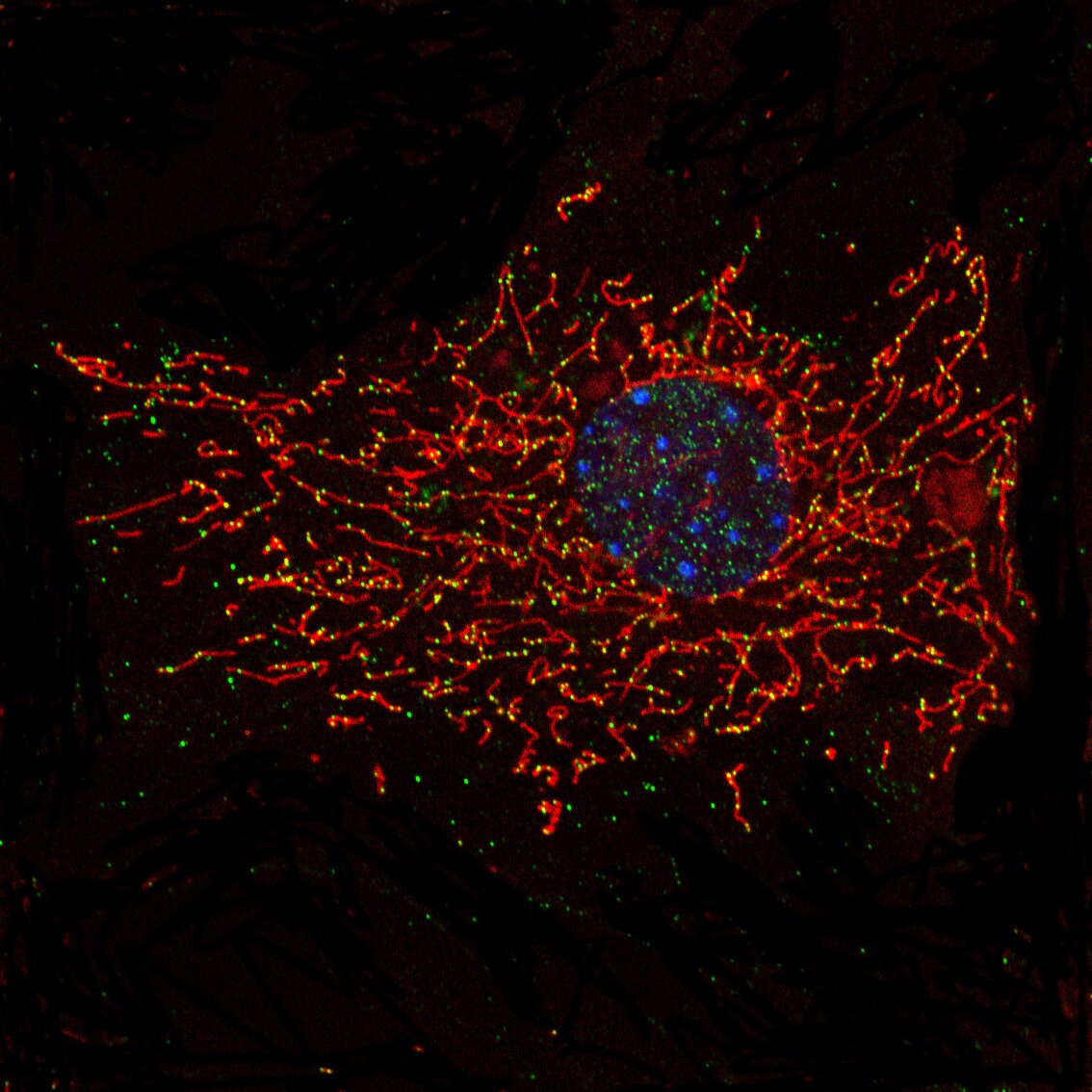.
S O U R C E : PHYS.org
O P E N A C C E S S P R I M A L S O U R C E : nature communications (A salvage pathway maintains highly functional respiratory complex I)

A cell: the cell nucleus is blue, the mitochondria structure red, and the mitochondrial DNA green. Credit: Alexandra Kukat.
If the energy supply of a cell is disturbed by damage, it can protect itself from functional losses and repair itself in a kind of workshop mode. That is the result of a new study conducted by Professor Dr. Aleksandra Trifunovic and Dr. Karolina Szcepanowska as a leading scientist in her team, at the CECAD Cluster of Excellence in Aging Research at the University of Cologne. The findings have been published in Nature Communications under the title "A salvage pathway maintains highly functional respiratory complex I."
Trifunovic's lab works on mitochondria, the powerhouses of every cell. The tasks of mitochondria include very basic processes such as the constant energy supply of the cell. The power machinery in mitochondria consists of five components, the so-called complexes I-V. In them, the food we eat is ultimately converted into energy for the cell. If the cellular energy supply is no longer guaranteed due to disturbances in signalling processes, this has serious consequences for the entire organism, and can cause diseases.
"In our most recent work, we have discovered a rescue route that enables cells to repair damage of a particularly sensitive part of complex I," said Trifunovic. "Repairing something is a far more energy-efficient self-help mechanism compared to the effort that would be required to completely destroy and rebuild this entire complex."
The specific rescue route Trifunovic identified also acts as a safety valve for the cell. If the rescue route becomes active, the dysfunctional component quickly switches to a shutdown mode and 'goes to the workshop.' This way, the cells prevent harmful reactive oxygen species from being produced and released in the powerhouse engine. Trifunovic remarked: "So far, very little is known about how this machinery is maintained and regulated. Our results shed light on this process and allow us to explore further therapeutic possibilities."
.../...
.













































